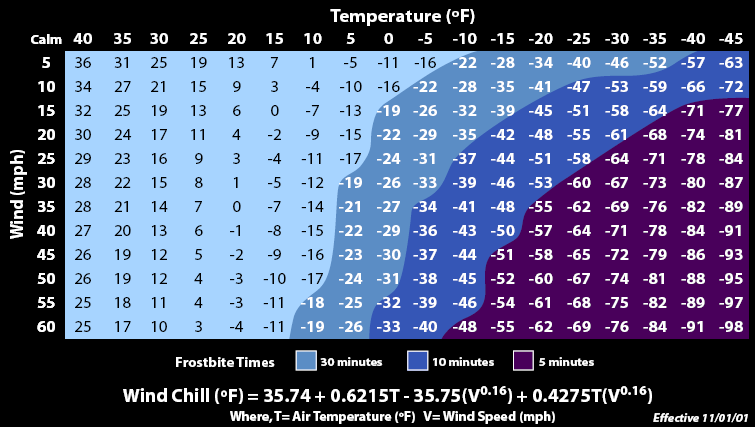Temperature Indices…How Hot or Cold Is It?
Temperature indices let you know how hot or cold you're likely to feel.

The weather industry uses several indices to give people a measure of how the temperature and other environmental factors will affect their safety and comfort. Let's take a look at a few of them and how they relate to you.
One of the best known is the Wind Chill Index, sometimes called Wind Chill Factor. Your body heat warms the air immediately adjacent to your skin, which forms a layer of molecules that can help keep you warm. The cooling effect of wind occurs when the breeze strips away that layer of warm molecules next to the skin and the effect increases with wind speed. The Wind Chill Index attempts to quantify that effect to give you an idea of how great that cooling effect is. We're used to hearing about wind chill when temperatures are, or forecast to be, very low. The colder it is, the greater the chance of frostbite and skin damage from exposure. At very low temperatures, frostbite, which occurs when the skin freezes, can occur in as little as five minutes. Wind chill always results in a lower temperature than ambient. When the resulting temperature is higher, then the Heat Index comes into play.

The Heat index (HI), given in degrees F, is a measure of how hot it feels when relative humidity (RH) is combined with the actual air temperature. Most people don't realize that the Heat Index is referenced to shade. Direct sunlight can increase the heat index by 15 degrees or more. High humidity levels indicate greater saturation of the atmosphere, slowing its uptake of moisture from evaporation. On humid days, sweat is slower to evaporate from your skin, reducing the cooling effect and making you feel hotter and stickier.
So, if the temperature was 85°F and the Relative Humidity was 85% the Heat Index would be 99°F. Believe me, that's an uncomfortable value. Many parts of the country will see heat index values over 100°F during the summer. Thanks to the invention of air conditioning many are fortunate to keep cool during the heat of summer. For those who do not have air conditioning keeping cool can be a life or death challenge.
NOAA's Weather Prediction Center has created a great WPC Heat Index Forecast Page that you can use to determine the heat index at your particular location. They also have a wonderful Heat Index Calculator for you to try out.
There are several variations of the heat index. THW is one variation which stands for temperature, humidity, and wind. It attempts to refine the heat index by adding the effects of wind on how hot it feels. Another index is THWS, which adds one more factor, solar energy (in watts/sq. meter). These two indices rarely vary more than a few degrees from the standard heat index and are less commonly used.
Finally, here is a list of possible heat disorders that could result for people in high risk groups when the HI reaches a certain value:
• 130F or higher = Heat stroke or sunstroke likely.
• 105 - 129F = Sunstroke, muscle cramps, and/or heat exhaustion likely. Heatstroke possible with prolonged exposure and/or physical activity.
• 90 - 105F = Sunstroke, muscle cramps, and/or heat exhaustion possible with prolonged exposure and/or physical activity.
• Heat Index between 80 - 90F = Fatigue possible with prolonged exposure and/or physical activity.
On a final note, pets such as dogs are very susceptible to heat stroke. Don't forget to find a shady, cool spot for your pets; they’ll be thankful you did.
Note: This article adapted from the an article on the CoCoRaHS web site. It was originally published as "Heat Index—What Is It?"
